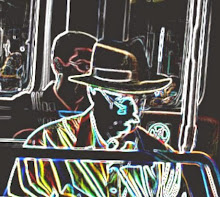.
I've never been much of a dancer, but ever since I was about six years old I've been visualizing when I listen to music.
I'm not alone in this, of course. Some people see colors, others patterns or even complete landscapes as they listen. There is a long history of artists who have attempted to translate such visions into a form that others can see, from static paintings to animated cartoons like Disney's Fantasia, to the vast wasteland of MTV music videos and the randomly generated wallpaper of digital audio players.
If you can picture all that, you have some glimpse of what Animusic is all about. (For a better idea, check out the samples on their web site at animusic.com.) It's a complete delight to witness music being emitted as light beams, pumped through tubes like a fluid, or flung through the air like balls--not to mention the wealth of self-tapping and self-strumming simulated instruments that resemble their real world counterparts.
The first time I saw their work was in an animation festival on TV. The piece was "Drum Machine," in which an imaginary bell tower driven by huge clockwork gears activates a collection of percussion instruments. I found it captivating, but had no idea how it was done.
Then recently I caught another example on Public TV, followed the link to their web site, and quickly ordered both of their DVD collections. The contents knocked me out. There is an amazing variety of both sounds and visuals, with each piece seeming to exist in its own little world like a precious objet d'art in a niche on a wall.
Equally interesting is the additional material on how the animations are created. The two guys behind Animusic, now known as "the core production team," are Wayne Lytle and Dave Crognale. Wayne is primarily the software engineer while Dave is the artistic designer. Both are clearly infatuated with music and the instruments that produce it. Between them they came up with the idea of inventing virtual instruments that could take their cues from computer and keyboard controls, and create matching images just as music synthesizers create sound.
One of the things they explain should be obvious, but at first glance is not. Their technique requires the animation to be created after the music, because the images have to anticipate the music. In other words, if a note is going to sound when a ball lands on a bell, then the animation has to produce all the action that precedes the event, and to coordinate with that exact moment in time. Watching them pull this off is endlessly fascinating. But for this reason the software does not operate in "real time" while the music is being played. (However, according to their website, they are experimenting with ways to do that, too.)
If any criticism is possible--and of course it is always possible--it might be to observe that many of the animations are of static instruments. The only motions are those of the instrument being played (or playing itself) and the wandering point of view of the virtual camera that pans around and through the scene. This reproduces the experience of watching a live performance, but not the dynamics of the progressive evolution of the music as it takes place in the mind of the listener--what we might call the "processional" or visionary aspect of music.
But there are exceptions that prove the rule, such as "Pogo Sticks," where a quintet of, well, pogo sticks rolls along a wooden highway like a Thomas the Tank Engine track while jamming together. The way their pauses and resumptions of motion match the music are an example of what can be done along these lines.
You might also complain that while the music is engaging and entertaining it is not "deep" -- neither classical nor truly jazz, and no more experimental than the tamest sorts of "new" music. Here again there are exceptions, though. The ear-popping finale of Mussorgsky's Pictures at an Exhibition shows that Animusic does not shrink from the classics. And the lyric simplicity of "Aqua Harp" (one of my personal favorites) approaches the perfection of a Chopin prelude.
It remains to be seen what will emerge from this new synthesis of audio and visual. Possibly the biggest contribution of the Animusic team will turn out to be the software tools they have created rather than the specific works they have created with them. Up till now, they have kept those tools proprietary, but now are considering marketing them for others to use.
Once these capabilities are released into the hands of the global community of artists and musicians then we'll find out what they can really do. You ain't seen music yet!
Saturday, April 19, 2008
The Best Music You Ever Saw
Posted by
The Nort
at
2:00 PM
![]()
![]()
Labels: animation, electronic music, music
Subscribe to:
Post Comments (Atom)








No comments:
Post a Comment